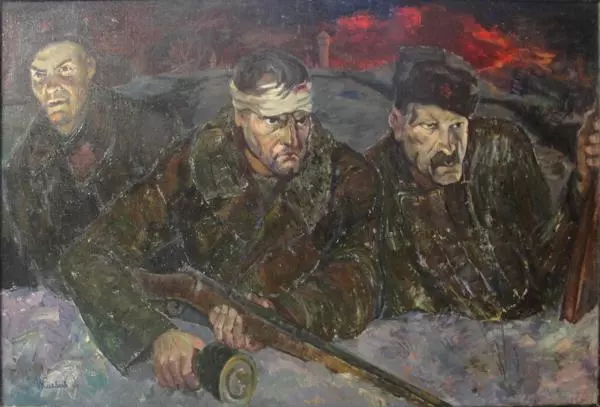Railway stations are key places for many of the modern cities. It is not uncommon for a station to appear first and then for a settlement to be built around it. This was the case with Uzlovaya station, which was previously called Khrushchevskaya by the name of the nearest settlement. It appeared on railroad maps in 1873. It is through this area in the Tula Governorate that the Syzran-Vyazma railway ran across.
It turned out that Khrushchevskaya station was a cross-rail point, a point of intersection of routes going in three directions. Trains going to Tula, Ryazhsk and Yelets left from here. Therefore, in 1877, the station was named Uzlovaya (cross-rail station), and a settlement with the same name was built around it. In the times of the Soviet Union, the settlement acquired the status of a city with several neighborhoods and enterprises, but the railway station is still the key point of Uzlovaya humming with activity twenty-four hours straight. Today it is a large and very important station of the Moscow Railway, for which specialists are trained in the local Mechanical College.
Ivan Kolbeyev in his Uzlovaya Station was able to convey with photographic precision all the details of the place that plays an important role in the life of a modern city. On its face, there are thousands of such stations, and they all look alike. But only an Uzlovaya citizen will be able to see that the picture shows a station building familiar since their childhood, three modern platforms and a pedestrian bridge in the distance. The city itself is hidden behind green trees, but has only to just turn on the imagination and the picture will be complemented by a station forecourt, clean and narrow streets, people hurrying somewhere. All this can be seen in almost every small town — Russian, Ukrainian, Belarusian. And that’s why Uzlovaya Station stirs up memories in people, so different and alike at the same time.
Ivan Sergeyevich Kolbeyev was born in Bryansk region in 1931. He took to painting in his early childhood, and first he practiced on his own, but later he entered the Penza Art School. After graduation, he tries himself in various genres, participates in exhibitions and navigates art. The artist’s creative experiments have resulted in many portraits, still-lifes and landscapes, some of which are stored in the Uzlovsky Museum of Fine Arts and Local History. Uzlovaya Station is among them.
Ivan Kolbeyev’s artistic legacy is not just paintings, but also graphics. In the 70s of the last century, he made himself known as a talented muralist creating a series of decorative panels and mosaics. Today they grace the buildings of educational institutions and enterprises of Uzlovaya city, the artist was closely connected to.
It turned out that Khrushchevskaya station was a cross-rail point, a point of intersection of routes going in three directions. Trains going to Tula, Ryazhsk and Yelets left from here. Therefore, in 1877, the station was named Uzlovaya (cross-rail station), and a settlement with the same name was built around it. In the times of the Soviet Union, the settlement acquired the status of a city with several neighborhoods and enterprises, but the railway station is still the key point of Uzlovaya humming with activity twenty-four hours straight. Today it is a large and very important station of the Moscow Railway, for which specialists are trained in the local Mechanical College.
Ivan Kolbeyev in his Uzlovaya Station was able to convey with photographic precision all the details of the place that plays an important role in the life of a modern city. On its face, there are thousands of such stations, and they all look alike. But only an Uzlovaya citizen will be able to see that the picture shows a station building familiar since their childhood, three modern platforms and a pedestrian bridge in the distance. The city itself is hidden behind green trees, but has only to just turn on the imagination and the picture will be complemented by a station forecourt, clean and narrow streets, people hurrying somewhere. All this can be seen in almost every small town — Russian, Ukrainian, Belarusian. And that’s why Uzlovaya Station stirs up memories in people, so different and alike at the same time.
Ivan Sergeyevich Kolbeyev was born in Bryansk region in 1931. He took to painting in his early childhood, and first he practiced on his own, but later he entered the Penza Art School. After graduation, he tries himself in various genres, participates in exhibitions and navigates art. The artist’s creative experiments have resulted in many portraits, still-lifes and landscapes, some of which are stored in the Uzlovsky Museum of Fine Arts and Local History. Uzlovaya Station is among them.
Ivan Kolbeyev’s artistic legacy is not just paintings, but also graphics. In the 70s of the last century, he made himself known as a talented muralist creating a series of decorative panels and mosaics. Today they grace the buildings of educational institutions and enterprises of Uzlovaya city, the artist was closely connected to.




